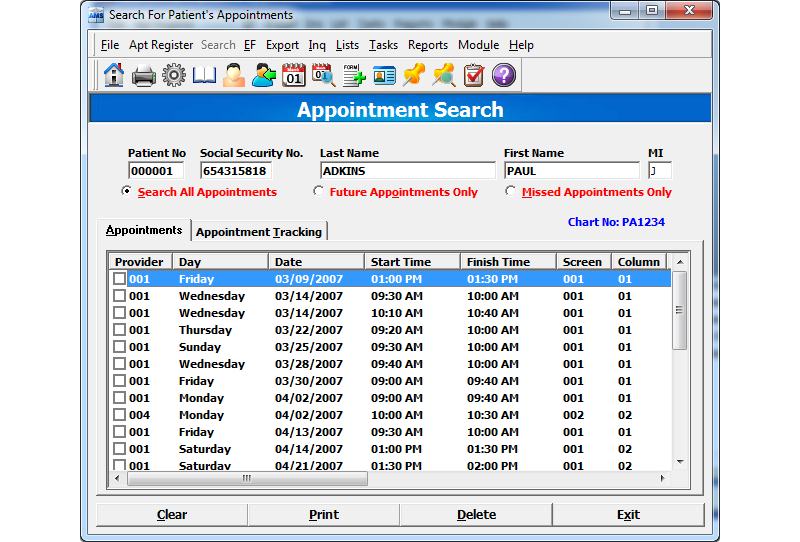
What can I do on the patient portal?
With a patient portal, you can:
- Make appointments (non-urgent)
- Request referrals
- Refill prescriptions
- Check benefits
- Update insurance or contact information
- Make payments to your provider's office
- Complete forms
- Ask questions through secure e-mail
Do you have a patient portal?
Yes we have a patient portal. You can schedule appointments, access lab results, request refills, view medical records, and send messages directly to your provider. You can learn more here.
What is my Patient Portal?
This is a business card with information on the MHS GENESIS Patient Portal for staff and providers to hand out to patients. This is the MHS GENESIS Patient Portal Brochure, which describes what the Patient Portal is and how to access it. This fact sheet describes the MHS GENESIS Cybersecurity transformation.
Do you have the patient portal?
With patient portals, the first and foremost thing you will need is a computer and a working internet connection. Create a customized user’s account in the software to avail medical services on your own. Once you enter the patient portal, click on links and products sold by the provider and tap into a new experience.

Who has the best patient portal?
Healthcare IT rating agency KLAS recently selected athenahealth's athenaCommunicator as the #1 patient portal, with a score of 91.8 on the most recent Best in KLAS awards . athenahealth's suite was also ranked #2 overall for practice sizes from 1-75 physicians.
What is a patient portal in healthcare?
A patient portal is a secure online website that gives patients convenient, 24-hour access to personal health information from anywhere with an Internet connection. Using a secure username and password, patients can view health information such as: Recent doctor visits. Discharge summaries. Medications.
What is the app for patient portal?
The PatientPORTAL App connects you, the patient, with your healthcare provider. The App enables you to view upcoming appointments and lab results, as well as send and receive secure messages for yourself and any dependents that you may have for easy communication with your provider.
What is EHR patient portal?
Electronic health record (EHR) patient portals provide a means by which patients can access their health information, including diagnostic test results. Little is known about portal usage by emergency department (ED) patients.
What types of patient portals are there?
There are two main types of patient portals: a standalone system and an integrated service. Integrated patient portal software functionality usually comes as a part of an EMR system, an EHR system or practice management software. But at their most basic, they're simply web-based tools.
Why should I use a patient portal?
The Benefits of a Patient Portal You can access all of your personal health information from all of your providers in one place. If you have a team of providers, or see specialists regularly, they can all post results and reminders in a portal. Providers can see what other treatments and advice you are getting.
Are patient portals easy to use?
Portals provide physicians with a fast and easy way to communicate with chronically ill patients. They are a place to get complete and more accurate patient information. Portals empower patients to take ownership of their own healthcare, so they remain aware of the entire care process.
Do doctors like patient portals?
The findings, published in the journal Health Affairs, indicate a lack of physician, health system and insurer engagement in promoting portal use—nearly 40% of patients in the study reported not being offered it.
Why do patients not use patient portals?
Disadvantages of patient portals result in these lower rates of use. For some people, they avoid using the portals altogether for reasons like security issues, low health literacy, or lack of internet. Even for those who do access their accounts, there are still other disadvantages of patient portals.
What is the difference between PHR and patient portal?
PHRs, EHRs and patient portals A PHR that is tied to an EHR is called a patient portal. In some but not all cases you can add information, such as home blood pressure readings, to your record via a patient portal.
How do you implement a patient portal?
9 Steps to Implement a New Patient Portal SolutionResearch Different Portal Solutions. ... Look for the Right Portal Features. ... Get Buy-In from Key Stakeholders. ... Evaluate and Enhance Existing Workflows. ... Develop a Comprehensive Onboarding Plan. ... Be Prepared for a Successful Go-Live. ... Seek Out Painless Portal Migration.
What are the benefits and challenges of using patient portals?
What are the Top Pros and Cons of Adopting Patient Portals?Pro: Better communication with chronically ill patients.Con: Healthcare data security concerns.Pro: More complete and accurate patient information.Con: Difficult patient buy-in.Pro: Increased patient ownership of their own care.
Are you a new patient? You can save time by downloading our New Patient Paperwork by clicking the button below. Simply download the forms, print and complete them and bring them to your appointment
Are you a new patient? You can save time by downloading our New Patient Paperwork by clicking the button below. Simply download the forms, print and complete them and bring them to your appointment.
About
Lubbock Family Medicine is an independently operated family practice established in Lubbock, Texas in 1999. We strive to provide quality healthcare to our patients. Our practice includes physicians, nurse practitioners, physician assistants, nurses and many other staff members.

Popular Posts:
- 1. northern light mercy patient portal
- 2. wentworth patient portal
- 3. rockwood patient portal
- 4. st john patient portal michigan
- 5. united health patient portal
- 6. medemerge greenbrook patient portal
- 7. lakeside patient portal
- 8. patient portal st e appleton
- 9. bjc portal for patients
- 10. cmh mychart patient portal